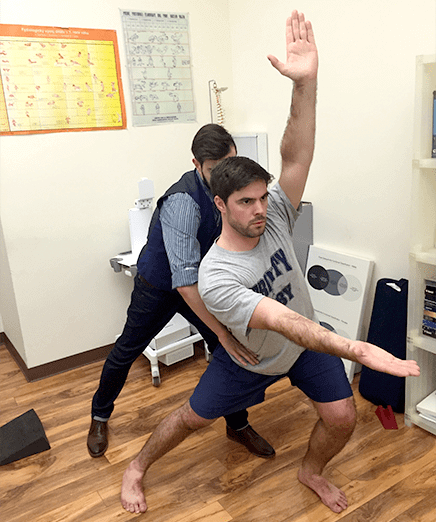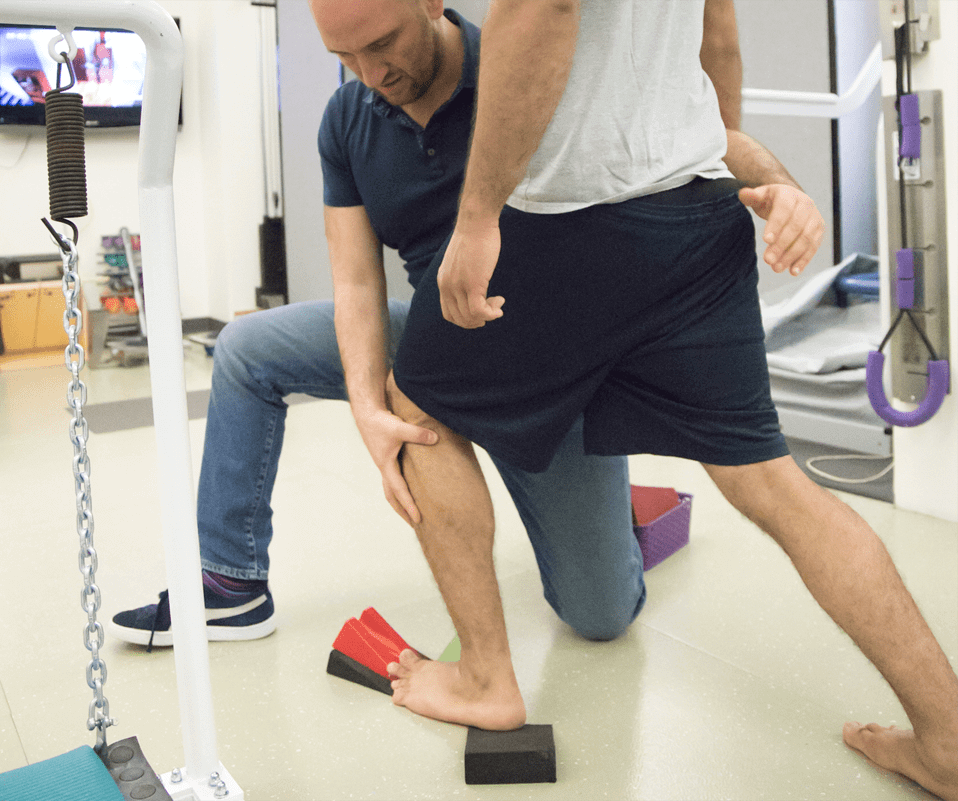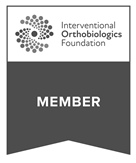
Anatomy in Motion is a revolutionary approach to the problem of chronic pain. It’s designed to systematically assess your gait and map out specific problems with the way you walk.
Once corrections are made and postural balance is restored, you’ll find yourself moving with optimal efficiency and grace. Best of all, you’ll walk without pain.
Walking is more complicated than most people realize. It calls upon a number of joints, muscles and ligaments throughout the body.
Your gait is as unique and personal to you as your fingerprint. Genetics, previous injuries, your daily routine of motion, the weight of your backpack, your shoes, your office chair and a host of other factors come into play. In a sense, your distinctive gait tells the story of your journey in life.
The key role player in walking is the brain. It sends messages of discomfort or pain when you twist an ankle, overexert or wear shoes that are too tight. These distress signals tell your body that it needs to make adjustments to spare you pain or injury. Subconsciously, you pick up on the signals and change your gait to relieve the part of your body that’s in pain.
That’s all well and good until other parts of your body have to pick up the slack. The work is unevenly distributed. As some muscles shoulder a heavier burden than others, they become overtaxed. They complain, in a manner of speaking, about the increased workload. You register their complaints as pressure, tightness or pain.
If you’re like most people, the same spots repeatedly cause all the trouble. You’ve probably felt better following treatment at the site of pain only to have another flare-up a few days later.
That’s because the problem is rarely inflammation or tissue damage at the precise site of pain. The pain is merely a symptom of trouble elsewhere. Continuing to concentrate treatment on that spot is not only an outdated method, but it’s a waste of time.
Anatomy in Motion approaches pain and dysfunction in an entirely new way. Pain can never be relieved once and for all unless it’s treated at its source. Identifying and correcting problems in the gait cycle can stop pain for good and change your life.
Taking AiM: A Different Approach The AiM approach is unlike any that have come before it. More time is taken to assess patients before diving into treatment.
Our interest in you goes far deeper than your pain. In order to find out where your body is overcompensating and throwing off your natural alignment, we’ll have to get to know you.
The first consultation is more or less a fact-finding mission. What is your health history? Have you suffered injuries in the past? When did your pain begin? How would you describe your lifestyle? How do you exercise? Which treatments have you attempted before now?
After methodically gathering detailed information about you, we’ll be able to make an informed recommendation. Treatment by trial and error seldom has an effective, permanent outcome. That’s why we take the time to thoroughly investigate and follow the clues before taking further action.

Fortunately, the human body is an excellent communicator. When your stomach growls, you know that you need nourishment. When your blood pressure is elevated, you know that dietary changes are in order. When you see spots before your eyes, you rush to sit down before you faint.
Pain is just one more way that your body tries to get your attention. If you’re living with recurring or chronic pain, you’d better take heed before your condition gets worse.

Over the years, influences like those listed above have changed the way you walk. An unnatural gait has become habitual. It would be set in stone if not for AiM.
After your initial consultation, which requires about two hours, sessions will include the following:
Anatomy in Motion is the wave of the future for ending chronic pain. Schedule an assessment to get your gait and your life back in balance. You’ll be walking tall again in no time.
Dr. Kalika is currently a certified member of:
American Institute of Ultrasound Medicine

Active member of ISMST
International Society of Extra Corporeal Shockwave Therapy
Active member of GCMAS
Gait and Clinical Movement Analysis Society
Active member of NASS
North American Spine Society
Active member of IADMS
International Association of Dance Medicine and Science
Active member of Virtual Rehabilitation Society
Active member of ASRA
American Society of Regional Anesthesia and Pain Medicine
American Academy
Association of Orthopedic Medicine

Active member of Interventional Orthobiologics Foundation
Dr. Lev Kalika is a world-recognized expert in musculoskeletal medicine. with 20+ years of clinical experience in diagnostic musculoskeletal ultrasonography, rehabilitative sports medicine and conservative orthopedics. In addition to operating his clinical practice in Manhattan, he regularly publishes peer-reviewed research on ultrasound-guided therapies and procedures. He serves as a peer reviewer for Springer Nature.
Dr. Kalika is an esteemed member of multiple professional organizations, including: